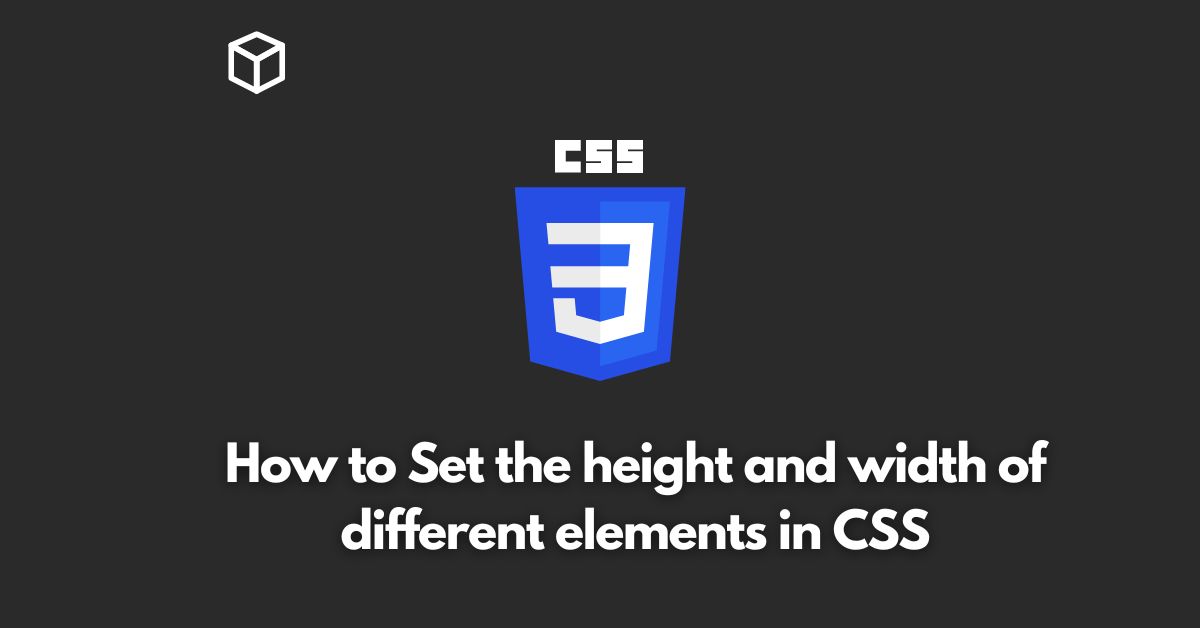As a web developer, one of the most important skills you can have is the ability to control the layout and dimensions of the elements on your webpage.
In this CSS tutorial, we will be discussing how to set the height and width of different elements in CSS, including some common use cases and practical examples to help you get started.
Setting the Height and Width of Elements
There are several different ways to set the height and width of elements in CSS, but the most common method is to use the “height” and “width” properties.
These properties can be applied to any HTML element, and can be specified using various units of measurement, including pixels (px), percentage (%), and ems (em).
For example, to set the width of a div element to 500 pixels and the height to 300 pixels, you would use the following code:
div {
width: 500px;
height: 300px;
}You can also use percentage values to set the width and height of elements relative to their parent container.
For example, to set the width of a div element to 50% of its parent container, you would use the following code:
div {
width: 50%;
}It’s also important to note that the height and width properties can also be applied to specific elements by using class or id selectors.
.example-class {
width: 300px;
height: 200px;
}<div class="example-class">Example</div>
Common Use Cases
One of the most common use cases for setting the height and width of elements in CSS is to create fixed-size containers, such as a header or footer section on a webpage.
For example, you might use the height and width properties to create a header with a specific height and width that stays the same on every page of your website.
Another common use case for setting the height and width of elements is to create responsive designs that adjust to the size of the user’s screen.
For example, you might use percentage values for the width and height properties to ensure that an element takes up a specific portion of the screen, regardless of the device being used to view the webpage.
Conclusion
Setting the height and width of elements in CSS is a fundamental skill for any web developer, and can be used to create a wide range of different layouts and designs.
Whether you’re creating a fixed-size container or a responsive design, understanding how to control the dimensions of your elements is essential for creating professional and polished webpages.
With the knowledge and examples provided in this article, you should be well on your way to mastering the art of setting height and width in CSS.




